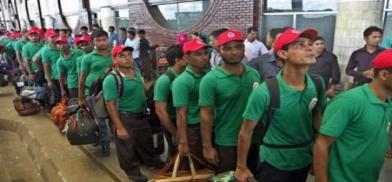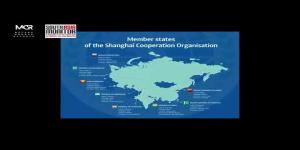Bangladesh's Record Remittance Flow: But Remittance Architecture Needs To Be Secure And Future-Ready
While FY25 has been a success story, sustaining this trend won’t be easy. Bangladesh’s remittance economy relies heavily on labor migration to the Middle East and Southeast Asia. However, labor demand in host countries is changing due to automation, nationalization of jobs (Saudi Arabia’s Saudization policy), and shifting immigration laws. The future of low-skilled labor exports is uncertain

Bangladesh has witnessed a remarkable economic milestone as remittance inflows reached an all-time high of $30.04 billion in the year 2024–25, a 25.50% increase compared to the previous fiscal year (FY24). The country is one of the world's top recipients of remittances but this marks a significant rebound in expatriate earnings sent home through official channels. After years of informal leakage, this sharp uptick offers much-needed relief to the country’s current account, foreign exchange reserves, and currency stability.
Bangladesh’s relationship with remittances spans decades. Since the 1970s, migrant labor has been a cornerstone of foreign exchange earnings. Over 13 million Bangladeshis live and work abroad, many in low-skilled jobs across the Gulf, Southeast Asia, and Europe. FY25’s record $30 billion is not an isolated miracle. It marks a return to growth after years of plateau and uncertainty. Several strategic and economic shifts converged to make it a landmark year.
Bangladesh has long battled the "hundi" system, an informal network that allows remittances to bypass the banking system. But in recent years, the government and central bank intensified regulatory crackdowns on money laundering and illicit transfers. Combined with stricter global AML (Anti-Money Laundering) compliance measures, this created pressure on both senders and agents to abandon informal channels.
Expatriate confidence revival
During the July movement last year, expatriates suspended sending remittance through the formal system in solidarity with students' movement against discrimination. Prior to the government's collapse, remittances had dwindled to $95.65 million in the first three days of August, reflecting the impact of social unrest and calls for a remittance boycott. Many expatriates had resorted to using the unofficial Hundi system to transfer funds, contributing to a decline in official remittances.
After Sheikh Hasina’s fall in August 2024, formal remittance channels saw a sharp rise as politically linked hundi operators fled, eroding the informal network’s appeal. The new interim administration’s stronger banking reforms and tighter regulatory oversight curtailed money laundering, restoring confidence among expatriates. As a result, more migrants began routing funds through banks not only for security but also as an act of economic patriotism. Combined with 2.5% cash incentives and competitive exchange rates offered by the banks, formal channels captured remittance flows that had previously gone underground.
After a period of currency volatility and reserve depletion, the taka began to stabilize in early 2025. The improved macroeconomic outlook pulled back the interest of expatriates in the formal system. Sending money home no longer meant watching their hard-earned income lose value overnight. The expansion of mobile banking, fintech solutions, and real-time transfer mechanisms has also made formal channels faster and more user-friendly. For many migrants, especially those in the Gulf or Southeast Asia, these platforms now offer the same ease and speed that hundi systems once boasted.
Needed better policy frameworks
While FY25 has been a success story, sustaining this trend won’t be easy. Bangladesh’s remittance economy relies heavily on labor migration to the Middle East and Southeast Asia. However, labor demand in host countries is changing due to automation, nationalization of jobs (Saudi Arabia’s Saudization policy), and shifting immigration laws. The future of low-skilled labor exports is uncertain, especially in a post-oil global economy. To move beyond low-wage jobs, Bangladesh must upskill its migrants. Sending trained nurses, IT professionals, or technicians abroad not only increases remittance volume but also enhances bargaining power and job security.
Despite regulatory success, hundi networks adapt quickly. According to studies, between 35% and 75% of official remittances in developing nations like Bangladesh are remitted through unofficial means. Users prefer hundi due to its lower transaction fees, faster service, accessibility in rural areas, and minimal bureaucratic requirements. Formal channels provide convenience and speed but may charge significant costs while hundi remains popular due to volatility in the foreign exchange market. If formal channels become slow, costly, or bureaucratic again, many migrants will revert.
Banks and fintech companies must make remittance faster, cheaper, and more accessible. Integrating blockchain-based KYC systems or expanding instant settlement platforms could boost formal uptake. The goal should be to make formal channels more convenient than informal ones—not just safer. The government should consider a semi-fixed exchange rate system or an adjustable peg exchange rate system to keep the exchange rate being offered by Bangladeshi public and private sector competitive for receiving remittance from migrants
Most remittance income goes into household consumption or real estate, not into productive investment. Without policy frameworks that guide remittances into education, SMEs, or capital markets, the long-term developmental impact remains muted. The government can issue diaspora bonds or remittance-linked savings accounts with attractive interest rates and sovereign guarantees. By turning remitters into investors, Bangladesh can channel billions into infrastructure, green energy, and healthcare.
Financial literacy programs
Many low-income Bangladeshi migrants send small amounts of money and often avoid formal channels because of all the paperwork. A lot of them, especially in the Middle East, don’t feel confident using the technology needed for legal transfers. Targeted financial literacy programs, mobile banking, and microfinance integration can help channel funds into productive ventures. Bangladeshi banks and their exchange houses should be encouraged to sponsor the cost of financial literacy and remittance-related awareness raising among migrant workers as well as recipients
When migrant workers come back home, they feel ignored and think their hard work abroad isn’t really valued. This makes them less interested in using official systems, so the government needs to make the process easier and treat them with more respect. Provision of basic facilities (night stay facility, food at discounted prices, etc.) at the airport would ease some of their stress. The electronic smart card that is issued to all the outbound migrant workers should be diversified and airport-based services should be made available to the outbound or returning card-holders at subsidized rates.
Bangladesh’s $30 billion remittance inflow in FY25 is a defining moment. It demonstrates that smart policy, technological modernization, and public trust can reshape an entire economic sector. The country must now build a resilient remittance architecture which will be diversified, secure, and future-ready. Let this be the beginning of a broader vision. Remittance is not just money sent home. It is a vote of confidence in the country left behind. Bangladesh must now rise to meet that trust with policy, with purpose, and with bold imagination.
(The author is doing her MSS in Peace and Conflict Studies, Dhaka University, Bangladesh. Views are personal. She can be reached at sadiakorobi007@gmail.com)








Post a Comment